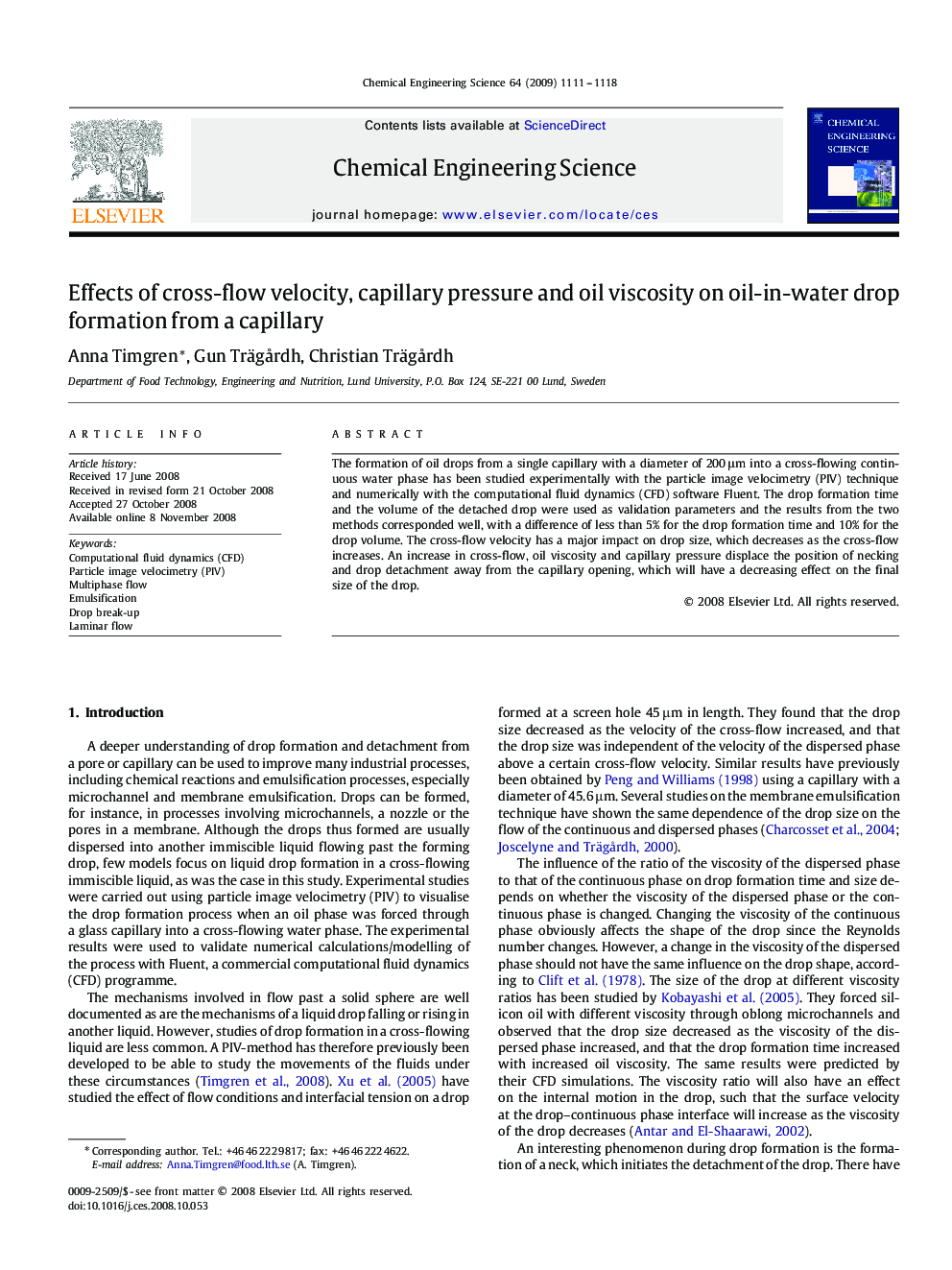| Article ID | Journal | Published Year | Pages | File Type |
|---|---|---|---|---|
| 158039 | Chemical Engineering Science | 2009 | 8 Pages |
The formation of oil drops from a single capillary with a diameter of 200 μm into a cross-flowing continuous water phase has been studied experimentally with the particle image velocimetry (PIV) technique and numerically with the computational fluid dynamics (CFD) software Fluent. The drop formation time and the volume of the detached drop were used as validation parameters and the results from the two methods corresponded well, with a difference of less than 5% for the drop formation time and 10% for the drop volume. The cross-flow velocity has a major impact on drop size, which decreases as the cross-flow increases. An increase in cross-flow, oil viscosity and capillary pressure displace the position of necking and drop detachment away from the capillary opening, which will have a decreasing effect on the final size of the drop.
